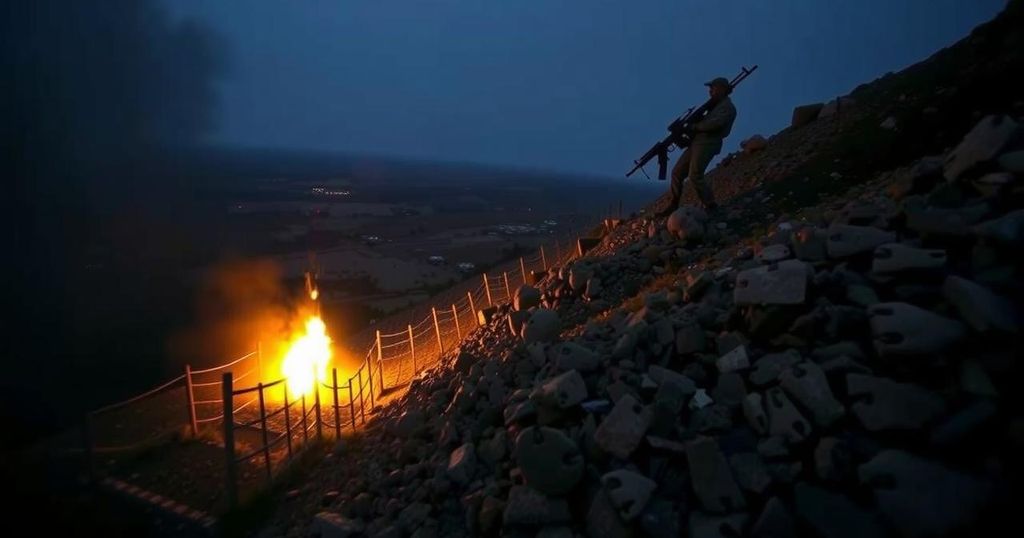Hezbollah Strikes Israel-Held Area Amidst Fragile Ceasefire

Hezbollah fired into Israel-held territory for the first time since a ceasefire began last week, responding to what Lebanon claims are repeated Israeli violations. This escalates an already volatile situation marked by a previous Hamas-led assault in October which generated heavy casualties and a humanitarian crisis in Gaza. Both sides continue to exchange accusations of ceasefire breaches amidst ongoing retaliatory strikes.
In Lebanon on Monday, Hezbollah launched its first attack since the ceasefire with Israel commenced last week, targeting a disputed border area known as Mount Dov. This action comes in response to repeated Israeli violations of the ceasefire, as reported by Lebanese authorities who claim over 50 such incidents have occurred since the agreement took effect. Despite the ceasefire brokered by the U.S. and France, the situation remains tense as both sides continue to accuse each other of non-compliance.
Hezbollah’s projectiles fell in open areas and reported no injuries, highlighting the precarious nature of the truce intended to halt the ongoing conflict that has caused extensive casualties and devastation, particularly in Gaza. The Israeli military has also performed retaliatory strikes in Lebanon, marking a continued pattern of violence following the significant territorial and human losses inflicted by both Israel and Hamas in recent months.
The mistrust between the two parties complicates the ceasefire, contributing to recurring military activities and making a lasting peace agreement seem distant. As Israeli officials emphasize their right to respond to ceasefire violations, the Lebanese Speaker of Parliament calls for immediate intervention to stop what he terms as “flagrant violations” of the ceasefire by Israel. This escalating tension underscores the fragile nature of the ceasefire agreement amid a backdrop of ongoing warfare.
The recent exchanges of fire between Hezbollah and Israel stem from over a year of heightened tensions and hostilities. The current conflict escalated dramatically following a Hamas-led attack on southern Israel on October 7, 2023, which claimed numerous civilian lives and resulted in mass hostage-taking. In retaliation, Israel launched extensive strikes in Gaza, leading to a significant humanitarian crisis and a steep rise in casualties on both sides. Efforts to establish a ceasefire were brokered by the United States and France, aimed at temporarily halting hostilities and providing a framework for potential negotiations, yet violations from both sides continue to jeopardize the truce. As the regional situation remains unstable, Hezbollah has expressed solidarity with Hamas, which aggravates the Israeli-Lebanese dynamic. The ceasefire, intended to last for 60 days, is fraught with challenges as both factions grapple with distrust, contributing to recurrent military actions that undermine peace efforts.
The situation remains critical as Hezbollah’s latest attack marks a significant breach of the fragile ceasefire established with Israel. Persistent accusations of violation by both parties complicate any prospects for lasting peace, while the humanitarian crisis in Gaza continues to escalate. With Lebanon’s parliament speaker urging immediate action to address Israel’s alleged breaches, the need for international intervention is increasingly urgent to stabilize the region and prevent further escalation of violence.
Original Source: apnews.com








